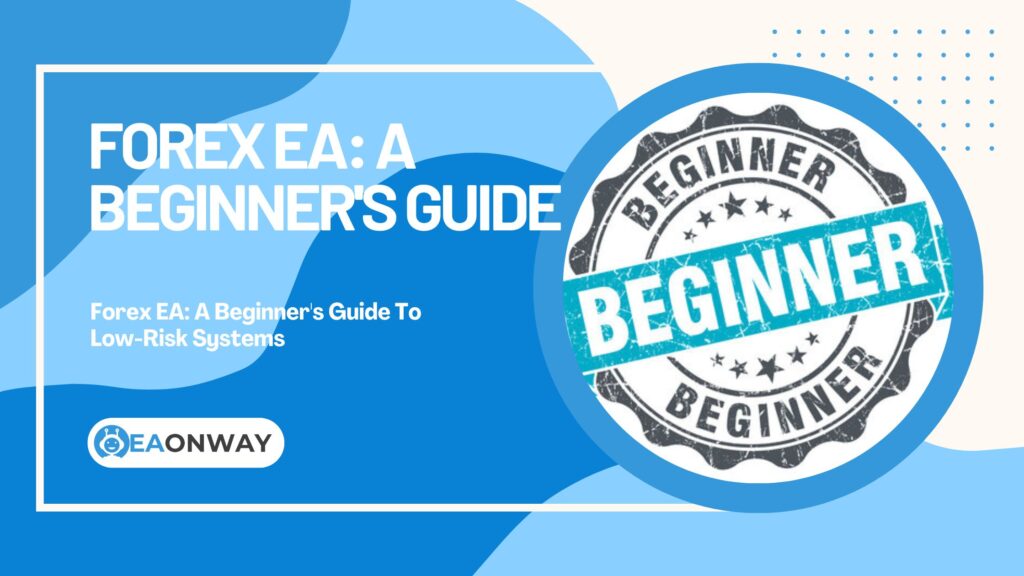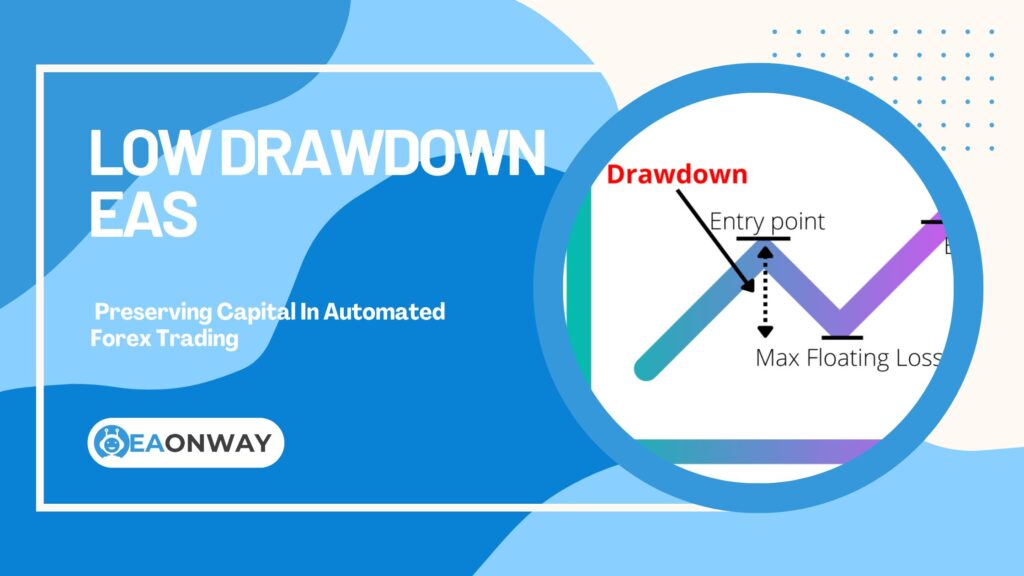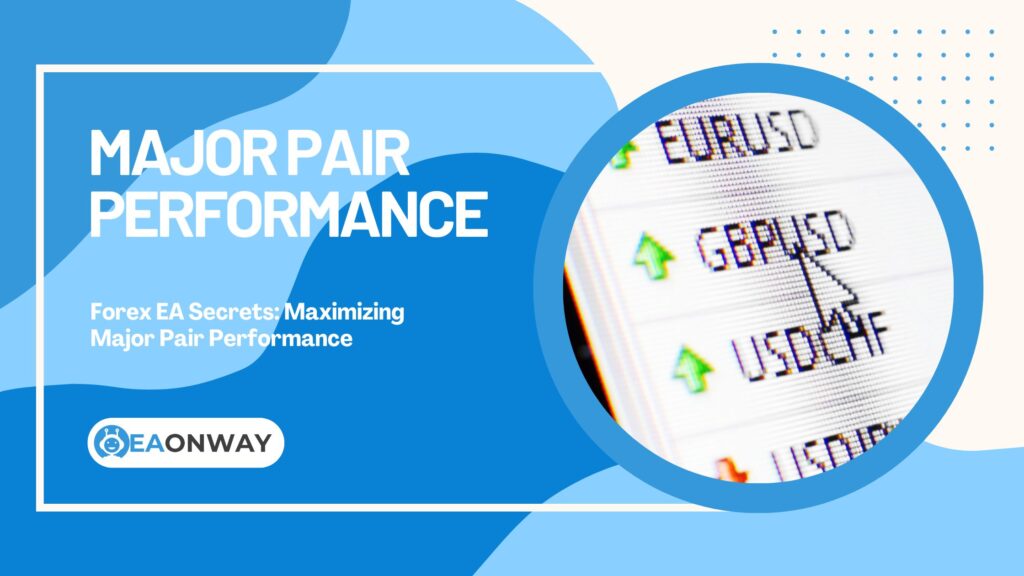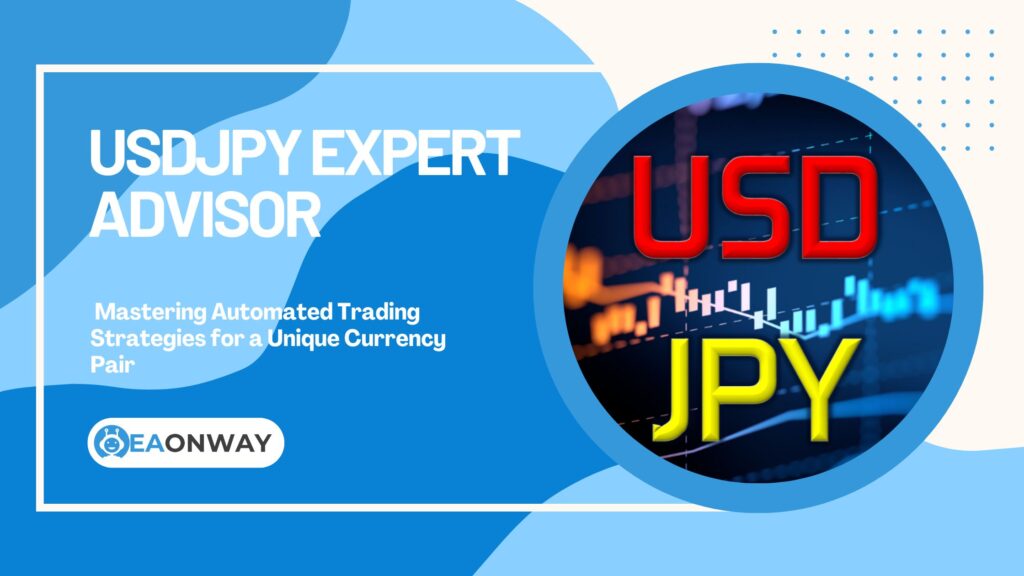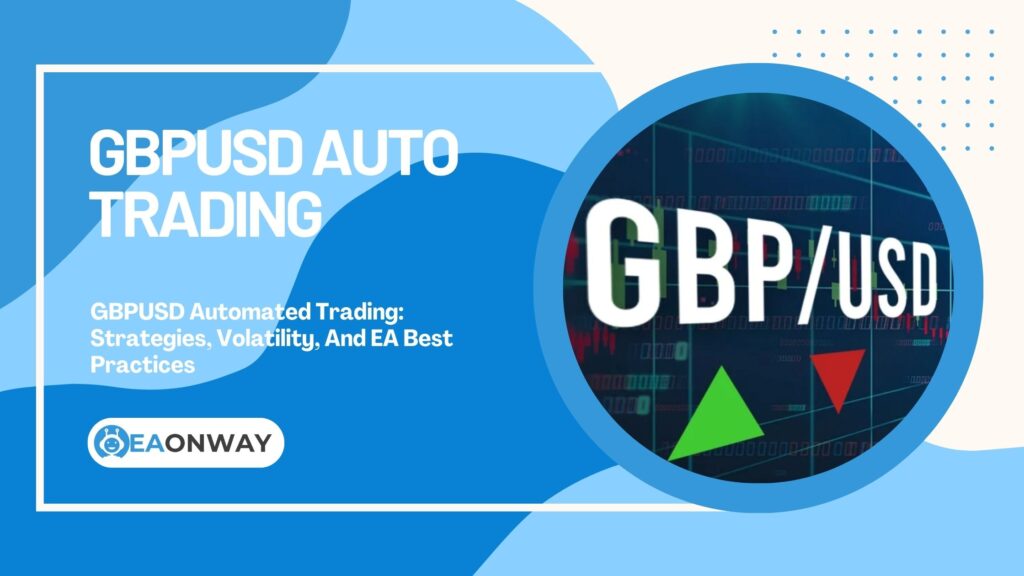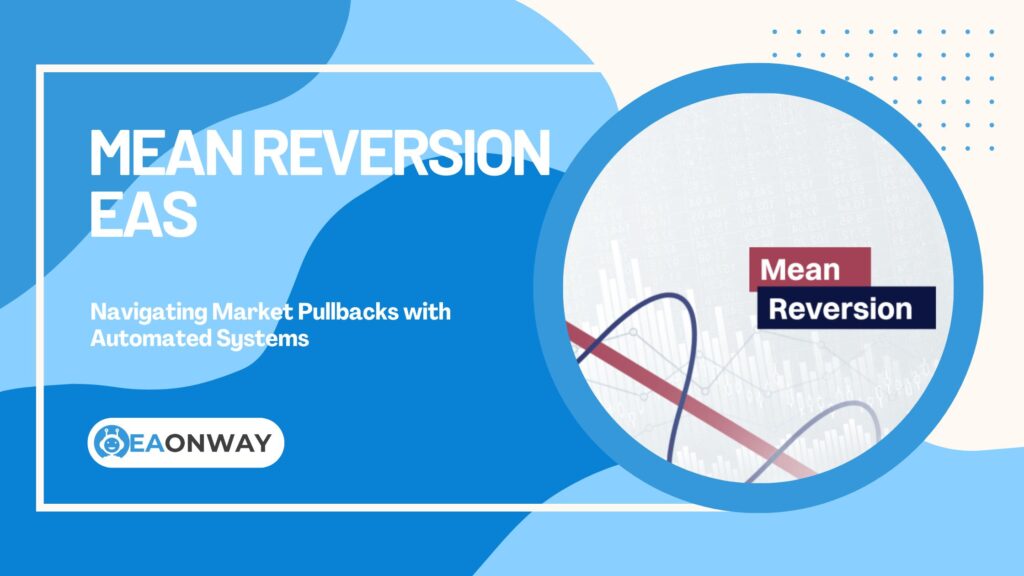Common EA Trading Strategies
Trading EURUSD with Expert Advisors: A Comprehensive Guide to Automating the World’s Most Popular Pair
Trading EURUSD with Expert Advisors: A Comprehensive Guide to Automating the World’s Most Popular Pair
Are you exploring ways to automate your trading of the world’s most liquid currency pair? A EURUSD Expert Advisor could be part of your approach, offering a method to engage with Forex automation; however, understanding both its potential and, crucially, its significant risks is paramount before venturing into automated trading systems. Many traders, especially those with demanding careers in IT, engineering, or finance, are drawn to the idea of algorithmic trading forex to save time and reduce emotional trading. This article delves into the intricacies of using an Expert Advisor for EURUSD, aiming to equip you with comprehensive knowledge, highlight potential pitfalls, and help you form realistic expectations about these sophisticated tools. We will cover what a EURUSD EA is, how it functions, the benefits and considerable risks involved, and what to consider when evaluating such software, including insights into MT4 Expert Advisors and MT5 Expert Advisors.
Key Takeaways for EURUSD EA Trading
Before diving deep, here’s a quick summary of what you need to know about trading EURUSD with Expert Advisors:
- Automation, Not Autopilot: EURUSD EAs automate trade execution based on pre-set rules but require ongoing monitoring and understanding. They are not “set and forget” solutions.
- EURUSD Popularity: The pair’s high liquidity and tight spreads make it a common choice for EAs, but this doesn’t guarantee easier profits.
- Significant Risks Involved: Over-optimization, technical failures, market volatility, and misleading vendor claims are major risks. Success is not guaranteed, and losses can be substantial.
- Strategy is Key: The underlying trading strategy of the EA (e.g., trend-following, scalping, grid trading) dictates its behavior and risk profile. Understanding this is crucial.
- Thorough Due Diligence: Choosing an EA requires careful research into its strategy, historical performance (with skepticism), vendor reputation, and user reviews.
- Backtesting is Indicative, Not Definitive: While essential, backtesting results on EURUSD Expert Advisors do not guarantee future performance due to factors like changing market conditions and data limitations.
- Risk Management is Non-Negotiable: Implementing robust risk management, including appropriate position sizing and stop-loss orders, is vital when using any Forex EA.
- Continuous Learning: The Forex market and EA technology evolve. Continuous learning and adaptation are necessary.
Understanding EURUSD Expert Advisors
Navigating the world of automated Forex trading begins with a clear grasp of what these tools are and how they interact with popular currency pairs like the EURUSD. Understanding the mechanics and rationale behind their use is the first step toward informed decision-making.
What Exactly is a EURUSD Expert Advisor?
A EURUSD Expert Advisor (EA) is a piece of software, a trading robot, specifically designed to automate trading decisions and executions for the Euro versus US Dollar currency pair on platforms like MetaTrader 4 (MT4) or MetaTrader 5 (MT5). It operates based on pre-programmed algorithms that analyze price movements and generate buy or sell signals according to a specific trading strategy. This Forex automation tool aims to remove emotional bias and execute trades 24/5, aligning with the Forex market’s continuous operation. These automated trading systems can incorporate various technical indicators, price patterns, and risk management rules to make trading decisions without human intervention.
How Do EURUSD Expert Advisors Execute Trades?
EURUSD Expert Advisors execute trades by directly interacting with your trading platform, such as MetaTrader 4 or MetaTrader 5. Once installed and activated on a chart, the EA continuously monitors the EURUSD price data. When the market conditions align with the criteria programmed into its algorithm (e.g., a moving average crossover, a specific indicator reading, or a price action pattern), the EA automatically sends an order to the broker to open, manage, or close a trade without manual intervention. This process includes setting stop-loss and take-profit levels as defined in its MQL4 or MQL5 programming.
The execution process typically follows these steps:
- The EA analyzes real-time EURUSD price data and technical indicators
- When predefined conditions are met, it generates a trading signal
- The EA automatically calculates position size based on risk parameters
- It sends the order (market or pending) to your broker via the trading platform
- Once the position is open, the EA manages it according to programmed rules
- It closes the position when exit conditions are met or stop-loss/take-profit levels are hit
Why is EURUSD a Popular Choice for EA Trading?
EURUSD is a popular choice for EA trading primarily due to its exceptionally high liquidity and typically tight spreads, which can reduce transaction costs. As the most traded currency pair globally, it offers consistent trading volume, meaning EAs can usually enter and exit positions efficiently. According to the Bank for International Settlements (BIS) Triennial Central Bank Survey, the EUR/USD consistently ranks as the top traded currency pair, accounting for a significant portion of daily Forex turnover (Source: BIS Triennial Central Bank Survey of Foreign Exchange and Over-the-counter (OTC) Derivatives Markets in 2022, December 2022). This high liquidity often translates to smoother price movements compared to less traded pairs, which can be more conducive for certain algorithmic trading forex strategies.
Additional factors making EURUSD attractive for EA trading include:
- Historical Data Availability: Extensive historical data is available for backtesting EURUSD strategies
- Economic Predictability: The economic calendars of both the Eurozone and US are transparent and well-documented
- Technical Analysis Responsiveness: The pair often responds well to technical indicators and chart patterns used in EA strategies
- Lower Volatility: Compared to exotic pairs, EURUSD typically exhibits more controlled volatility, making risk management more predictable
- Widespread Broker Support: Virtually all Forex brokers offer EURUSD trading with competitive conditions
The Allure and Advantages of Automating EURUSD Trades
The appeal of automating EURUSD trading with Expert Advisors is understandable, especially for individuals with busy schedules or those seeking to systematize their trading approach. While benefits exist, they must always be weighed against the inherent risks.
What are the Main Benefits of Using an EA for EURUSD?
The main benefits of using an EA for EURUSD trading include continuous market operation, emotionless decision-making, speed of execution, the ability to backtest strategies, and diversification potential. These automated systems aim to capitalize on opportunities around the clock and adhere strictly to programmed rules.
24/7 Trading Operations: The Forex market operates 24 hours a day, five days a week. An EA can monitor the EURUSD pair and execute trades even while you are asleep or occupied, ensuring no potential trading signals defined by its strategy are missed. This is particularly useful for strategies that rely on specific market sessions (e.g., London, New York, Tokyo) or those targeting price movements during major economic releases from the Eurozone or United States.
Emotionless Decision Making: Fear and greed are powerful emotions that can significantly impair a human trader’s judgment, leading to impulsive decisions or deviations from a trading plan. EAs operate purely on logic and pre-set parameters, eliminating the emotional component from trade execution. This disciplined approach can help maintain consistency in EURUSD trading, especially during volatile market periods when emotional reactions are most likely to interfere with rational decision-making.
Speed and Efficiency in Execution: Automated trading systems can react to market changes and execute trades far faster than a human can. In fast-moving markets or for high-frequency strategies like scalping EA EURUSD, this speed can be crucial for entering and exiting trades at desired price levels. The millisecond reaction time of an EA can be particularly valuable during major economic news releases affecting EUR or USD, where price can move rapidly in unpredictable directions.
Backtesting Capabilities: One of the significant advantages is the ability to perform backtesting. Traders can test the EA’s strategy on historical EURUSD price data to evaluate its hypothetical performance over past periods. This helps in understanding the EA’s behavior under various market conditions before risking real capital. Comprehensive backtesting platforms within MT4 and MT5 allow for detailed analysis of strategy performance across different timeframes and market conditions.
Strategy Adherence: An EA will stick to its programmed trading strategy without deviation. Human traders might be tempted to alter their strategy mid-trade or based on a losing streak, but an EA ensures disciplined execution of the predefined rules. This consistency can be especially valuable for complex EURUSD trading strategies that require precise timing or multiple condition checks before execution.
Navigating the Inherent Risks of EURUSD Expert Advisor Trading
While EAs offer automation, they are far from a risk-free solution. Understanding and preparing for the potential downsides is critical for anyone considering their use. The allure of passive income can often overshadow the stark realities of automated trading risks.
What are the Key Risks Associated with EURUSD EAs?
The key risks associated with EURUSD EAs include the danger of over-optimization leading to poor live performance, susceptibility to technical failures, significant losses during unexpected market volatility, the false belief in “set and forget” systems, prevalence of scams, and broker-dependent issues like slippage. These factors can lead to substantial financial loss if not carefully managed.
Over-Optimization and Curve Fitting: This is a major pitfall. An EA might be optimized to show stellar results on historical data (backtesting), but these settings may be “curve-fitted” specifically to past price action and fail miserably in live, unseen market conditions. The EURUSD EA settings that worked in a specific historical period may become ineffective when market dynamics change. Studies in algorithmic trading have consistently shown that highly optimized systems tend to perform poorly in live trading compared to their backtested results.
Mechanical Failures and Connectivity Issues: EAs rely on a stable internet connection, a functioning computer or Forex VPS for EAs, and a responsive trading platform. Power outages, internet disruptions, or platform glitches can prevent an EA from executing trades correctly, potentially leading to missed opportunities or unmanaged open positions. Even a brief connectivity interruption during a critical market move can result in significant losses if stop-loss orders aren’t executed as planned.
Market Volatility and Unforeseen Events: Major economic news releases (like Non-Farm Payrolls for USD or ECB announcements for EUR), geopolitical events, or “black swan” events can cause extreme market volatility and price gaps. An EA programmed for normal market conditions might perform poorly or incur substantial losses during such periods if its risk management forex EA protocols are inadequate. For example, during the Swiss Franc depeg event in 2015, many algorithmic systems suffered catastrophic losses due to extreme volatility and lack of liquidity.
The Myth of “Set and Forget” Systems: Many believe an EA, once set up, requires no further intervention. This is a dangerous misconception. Market dynamics change, and an EA that was profitable might become unprofitable. Regular monitoring, performance review, and potential adjustments to EA optimization are necessary. The currency markets evolve over time, with changing correlations, volatility regimes, and central bank policies that can render previously effective strategies obsolete.
Scams and Unrealistic Promises: The Forex EA niche is unfortunately rife with vendors making exaggerated claims of guaranteed profits or incredibly high returns with minimal risk. Many “best EURUSD EA” offerings are aggressively marketed with unrealistic promises. It’s crucial to be highly skeptical of such claims. Regulatory bodies often warn about the high-risk nature of Forex and CFD trading; for example, the U.S. Commodity Futures Trading Commission (CFTC) provides investor advisories on foreign currency trading risks (Source: CFTC Customer Advisory: Foreign Currency (Forex) Trading Can Be Risky, February 2019).
Broker-Specific Risks: Factors like variable spreads, execution speed, and slippage can differ between brokers and significantly impact an EA’s performance, especially for strategies like scalping. What works well on one broker’s demo account might perform differently on a live account or with another broker. Some EAs, particularly those using high-frequency trading strategies, may be highly sensitive to execution quality and might only be profitable with certain brokers offering specific trading conditions.
Lack of Adaptability: Most EAs are programmed with fixed rules and may not adapt well to evolving market structures or changes in the EURUSD pair’s typical behavior without manual reprogramming or re-optimization. Unlike human traders who can recognize shifting market conditions and adjust their approach accordingly, most EAs continue executing their predefined strategy regardless of broader market changes.
Choosing Your EURUSD Expert Advisor: A Crucial Decision
Selecting an EA is one of the most critical steps in your automated trading journey. It requires careful investigation and a healthy dose of skepticism, moving beyond marketing hype to understand the core mechanics and integrity of the software.
How Do You Select a Potentially Reliable EURUSD EA?
Selecting a potentially reliable EURUSD EA involves a multi-faceted approach: deeply understand its trading strategy, scrutinize any verifiable track records (with caution), assess vendor transparency and reputation, check for customization options, and consider independent user feedback. No EA guarantees profit, so the focus is on informed selection, not finding a mythical “holy grail.”
Understanding the Underlying Strategy: Don’t just look at profit curves. You must understand how the EA makes trading decisions. Is it a trend-following system, a scalping EA EURUSD, a grid trading EA (which carries extremely high risks), a martingale system (also very high risk), or something else? Knowing the EURUSD trading strategy helps you anticipate its behavior and risk profile. A reputable vendor should be able to clearly explain the trading logic without necessarily revealing proprietary details. Be particularly cautious of strategies that employ aggressive position sizing methods like martingale, which can appear profitable until a catastrophic loss occurs.
Verifiable Track Record (with Caveats): Look for EAs with live trading results verified by third-party services like Myfxbook or FXBlue. However, be aware that:
- Past performance is not indicative of future results.
- Some track records can be manipulated or may not represent typical trading conditions.
- Focus on metrics like drawdown, risk-reward ratio, and consistency over a long period, not just net profit.
- Check if the performance data covers different market conditions (trending, ranging, volatile periods).
- Verify whether the track record is from a demo or live account, as execution differs.
Transparency and Vendor Reputation: Reputable vendors are usually transparent about their EA’s logic (without necessarily revealing the full source code), provide support, and have a history in the market. Beware of anonymous sellers or those making outlandish claims. Look for MQL4 programming or MQL5 programming expertise if disclosed. Research the vendor’s history, customer service responsiveness, and how they handle negative feedback. Vendors who have been active for several years and maintain a professional presence are generally more trustworthy than newcomers with extraordinary claims.
Customization and Settings: A good EA often allows users to adjust key parameters (like lot size, risk per trade, stop-loss, take-profit levels, and indicator settings for the EURUSD EA settings) to suit their risk tolerance and account size. However, excessive customization can also lead to over-optimization if not handled carefully. The best EAs strike a balance between flexibility and simplicity, with clear documentation explaining how different parameters affect performance and risk.
User Reviews and Community Feedback: Look for independent reviews and discussions on forums. Be wary of overly positive reviews that might be fake or incentivized, and equally, don’t let a few negative reviews (which can sometimes be due to user error or unrealistic expectations) completely deter you if other factors are positive. The goal is to gather a balanced view. Established forums like ForexFactory, MQL5 Community, or specialized Forex EA review sites can provide valuable insights from actual users.
Backtesting and Forward Testing Results: While backtesting is a starting point, forward testing (running the EA on a demo account in live market conditions) for a reasonable period (weeks or months) provides a more realistic assessment of its potential. This step is non-negotiable and should be performed by you personally, not just trusted from vendor demonstrations. A minimum of 3-6 months of forward testing can reveal how the EA handles different market conditions and whether its performance aligns with backtesting results.
Fundamentals of Automated EURUSD Trading Success
Success in automated trading, particularly with a volatile pair like EURUSD, isn’t just about finding a good EA. It’s about adopting a disciplined and informed approach to its application and management.
What Core Principles Underpin Successful Automated EURUSD Trading?
Core principles for potentially more stable automated EURUSD trading include maintaining realistic expectations (no EA is a “holy grail”), implementing stringent risk management protocols, engaging in continuous monitoring and adjustment, thoroughly understanding the EA’s logic, and utilizing a reliable Forex VPS for EAs. These elements collectively contribute to a more structured and risk-aware trading experience.
Realistic Expectations: No Holy Grail: This is the most crucial principle. No EA will generate profits indefinitely without risk or effort. Expect periods of drawdown and losses. The goal is a positive expectancy over the long term, not instant riches. Even the most sophisticated institutional algorithmic trading systems experience drawdowns and periods of underperformance. Set realistic performance targets, understanding that steady, modest returns with controlled risk are more sustainable than spectacular but volatile profits.
Solid Risk Management Protocols: This is non-negotiable.
- Position Sizing: Never risk more than a small percentage of your trading capital on a single trade (e.g., 1-2%). Many professional traders advise even lower risk-per-trade percentages for automated systems.
- Stop Loss: Ensure the EA uses appropriate stop-loss orders to limit potential losses on each trade. Be particularly cautious of EAs that don’t implement hard stop-losses (like some grid or martingale systems).
- Overall Drawdown Limit: Have a plan for when to stop using an EA if it exceeds a certain drawdown level on your account. For example, you might decide to halt trading if the EA experiences a 15-20% drawdown from its peak equity; effective techniques for managing drawdown and preserving capital are vital in such scenarios.
- Correlation Management: If running multiple EAs, ensure they’re not highly correlated in their trading approaches, which could multiply risk during adverse market conditions.
Continuous Monitoring and Adjustment: Automated does not mean “set and forget.” Regularly review the EA’s performance, check for any errors, and assess if its strategy remains suitable for current market conditions. You might need to adjust EA optimization or even stop using an EA if its performance degrades significantly. Establish a routine for reviewing your EA’s operations, perhaps weekly for performance metrics and daily for basic functioning. Pay particular attention after significant market events or changes in volatility.
Understanding Your Chosen EA’s Logic: Even if you didn’t code it yourself, strive to understand the basic principles of its EURUSD trading strategy. This helps you anticipate how it might react in different market scenarios and identify if it’s behaving erratically. This knowledge allows you to make informed decisions about when to intervene, adjust settings, or temporarily disable the EA during unsuitable market conditions. The more you understand your EA’s decision-making process, the better equipped you’ll be to manage its operation effectively.
Importance of a Forex VPS for EAs: A Virtual Private Server (VPS) is highly recommended for running EAs. A VPS ensures your trading platform and EA run 24/7 without interruption from your local computer issues or internet downtime, which is critical for consistent EA operation. When selecting a Forex VPS for EAs, consider factors like:
- Proximity to your broker’s servers to minimize latency
- Reliability and uptime guarantees (look for 99.9%+ uptime)
- Sufficient resources (RAM, CPU) to handle your trading platform and EA smoothly
- Backup power and internet connectivity to ensure continuous operation
- Technical support availability should you encounter issues
Common Strategies Employed by EURUSD Expert Advisors
Expert Advisors for the EURUSD pair can utilize a diverse range of trading methodologies. Understanding these common strategies helps in assessing an EA’s potential behavior, its suitability for your risk appetite, and its likely performance characteristics.
What Trading Strategies Do EURUSD EAs Often Use?
EURUSD EAs often employ strategies such as trend following, range trading (mean reversion), scalping for small, frequent profits, grid trading (which accumulates positions and carries high risk), and sometimes news-based strategies that attempt to capitalize on volatility from economic releases. Each strategy has distinct risk-reward profiles and operational characteristics.
Trend Following Strategies: These EAs aim to identify the dominant market trend (uptrend or downtrend) in the EURUSD and enter trades in the direction of that trend. They typically use indicators like moving averages, MACD, or ADX. They seek to capture large price movements but can suffer during sideways or choppy markets. Trend following EAs typically:
- Have a lower win rate but higher reward-to-risk ratio
- Perform best during strong directional movements in EURUSD
- Often incorporate trend strength filters to avoid false signals
- May include pullback detection for better entry timing
- Usually employ wider stop-losses to accommodate market noise
Range Trading / Mean Reversion Strategies: These EAs operate on the assumption that the EURUSD price will often revert to its historical mean or trade within defined support and resistance levels. They look for overbought conditions to sell and oversold conditions to buy, often using oscillators like RSI or Stochastics. They perform well in non-trending, range-bound markets but can be risky when a strong breakout occurs. These systems typically:
- Identify upper and lower boundaries of price ranges
- Enter counter-trend positions when price reaches extremes
- Have higher win rates but lower reward-to-risk ratios
- May incorporate volatility filters to adjust position sizing
- Often struggle during trend acceleration phases
Scalping EAs for EURUSD: Scalping EAs aim to make very small profits (a few pips) from a large number of trades. They require very fast execution, low spreads, and minimal slippage, making broker choice critical. The high liquidity of EURUSD can be conducive to scalping, but these EAs are sensitive to transaction costs. Scalping systems typically:
- Hold positions for very short periods (seconds to minutes)
- Execute numerous trades throughout the trading day
- Rely heavily on technical indicators for entry/exit signals
- Require precise execution and low transaction costs
- Are particularly vulnerable to spread widening and slippage
Grid Trading EAs: A grid trading EA places a series of buy and sell orders at predefined intervals above and below the current price, creating a “grid” of orders. The idea is to profit from price fluctuations regardless of direction. However, grid trading is extremely risky. If the price moves consistently in one direction without retracements, it can lead to a rapid accumulation of losing positions and potentially margin calls or account wipeouts. These EAs often do not use stop losses on individual trades within the grid, relying on the eventual price reversal which may not occur. Grid systems typically:
- Place multiple pending orders at regular price intervals
- Add to positions as price moves against initial trades
- Can generate impressive results in ranging markets
- May employ position averaging or martingale-like techniques
- Can experience catastrophic losses during sustained trends
News Trading EAs: These EAs are designed to trade around significant economic news releases that affect the EURUSD (e.g., FOMC statements, ECB press conferences, NFP reports). They attempt to capitalize on the increased volatility. However, news trading is complex due to potential for extreme slippage, widened spreads, and unpredictable price spikes. News trading systems typically:
- Monitor economic calendars for high-impact events
- May pause regular trading before major announcements
- Might use volatility breakout strategies after news releases
- Require robust risk management due to unpredictable movements
- Can employ directional bias based on deviation from forecasts
Martingale/Anti-Martingale Variations: Some EAs incorporate Martingale (doubling down after a loss) or Anti-Martingale (increasing position size after a win) money management strategies. Martingale strategies are exceptionally high-risk and can lead to catastrophic losses, despite potentially showing smooth equity curves for periods. These systems typically:
- Increase position size after losing trades (Martingale) or winning trades (Anti-Martingale)
- Can appear highly profitable during favorable periods
- May disguise risk through complicated position management
- Often experience sudden, catastrophic drawdowns
- Are particularly dangerous when combined with grid strategies
The Critical Role of Backtesting for EURUSD Expert Advisors
Backtesting is a cornerstone of evaluating any algorithmic trading system. For EURUSD Expert Advisors, it provides a simulated look into how a strategy might have performed historically, offering insights but also carrying important limitations.
What is Backtesting and Why is it Essential for EURUSD EAs?
Backtesting is the process of applying a trading strategy or Expert Advisor to historical price data of the EURUSD pair to simulate how it would have performed in the past. It is essential because it provides a quantitative assessment of an EA’s potential viability, profitability metrics (like net profit, drawdown, win rate), and risk characteristics before risking real capital in live trading. It helps filter out clearly underperforming strategies and identify potential weaknesses in an EA’s approach.
Proper backtesting serves multiple critical functions:
- It reveals how an EA might behave across different market conditions
- It helps identify potential failure points in the strategy
- It provides baseline performance metrics for comparison during live trading
- It allows for strategy refinement and parameter optimization
- It builds confidence in the EA’s underlying logic (or exposes flaws)
How Do You Effectively Backtest a EURUSD Expert Advisor?
Effectively backtesting a EURUSD Expert Advisor involves using high-quality historical data, accurately modeling trading conditions like spread and slippage, understanding all parameters in the backtesting report, and acknowledging its limitations. The goal is to get as realistic a simulation as possible, not just to achieve an impressive-looking equity curve.
Using Quality Historical Data: The accuracy of backtesting heavily depends on the quality and granularity of the historical price data used. Ideally, use tick data (every price change) if available for the EURUSD, especially for scalping EAs. Ensure the data covers various market conditions (trending, ranging, volatile). Many brokers provide historical data within MetaTrader 4 or MetaTrader 5, but third-party sources may offer higher quality data with fewer gaps or errors. For short-term strategies, particularly those executing multiple trades daily, tick data is practically essential for meaningful results.
Understanding Backtesting Parameters (Spread, Slippage, Commission):
- Spread: Use a realistic average spread for EURUSD, or even a slightly wider spread than current conditions, to stress-test the EA. Fixed, unrealistically low spreads in backtesting can inflate results. Consider that spreads widen during news events and periods of market volatility.
- Slippage: While harder to model perfectly, acknowledge that slippage (difference between expected and actual execution price) will occur in live trading, especially during volatile times. Some advanced backtesting tools allow for slippage simulation. For high-frequency strategies, even 1-2 pips of slippage can significantly impact profitability.
- Commission: Factor in any per-trade commissions your broker charges. For strategies executing many trades, even small per-lot commissions can substantially affect bottom-line results.
- Swap/Overnight Financing: For strategies holding positions overnight, include swap charges/credits in your calculations, as these can significantly impact profitability for longer-term positions.
Interpreting Backtesting Reports: Don’t just focus on the net profit. Analyze key metrics:
- Total Net Profit: Overall profitability after all costs.
- Maximal Drawdown: The largest peak-to-trough decline in equity, indicating risk. Lower is generally better.
- Profit Factor: Gross profit divided by gross loss (ideally >1.5). Higher values indicate more profit per unit of risk.
- Win Rate: Percentage of profitable trades. Consider this alongside average win/loss size.
- Average Win/Loss: The average size of winning and losing trades. A healthy ratio would have average wins larger than average losses.
- Sharpe Ratio: Risk-adjusted return, measuring excess return per unit of risk. Higher values indicate better risk-adjusted performance.
- Number of Trades: A very low number of trades over a long period might not be statistically significant. Typically, you want hundreds of trades for reliable assessment.
- Recovery Factor: Net profit divided by maximum drawdown. Higher values indicate stronger recovery capability.
- Monte Carlo Analysis: If available, this provides probability distributions of outcomes by randomizing trade sequence.
Limitations of Backtesting: Crucially, understand that:
- Past performance is not a guarantee of future results. Market conditions change, sometimes fundamentally.
- Over-optimization (curve fitting) can make backtests look good but lead to poor live performance. This occurs when EA parameters are too specifically tuned to historical data patterns that don’t persist.
- Backtests don’t fully replicate real-world trading conditions (e.g., unpredictable news events, slippage nuances, execution delays, or liquidity gaps).
- The psychological aspect of watching an EA trade live with real money is absent in backtesting but can significantly impact decision-making.
- Market structure evolves over time, potentially rendering historical relationships less relevant.
Setting Up and Optimizing Your EURUSD EA
Once you’ve chosen an EA and understood its strategy, the next steps involve installation, configuration, and potentially optimization. These technical aspects are crucial for the EA to function as intended on your trading platform.
How Do You Install and Configure a EURUSD EA on MT4/MT5?
To install a EURUSD EA on MetaTrader 4 (MT4) or MetaTrader 5 (MT5), you first copy the EA file (usually .ex4 for MT4 or .ex5 for MT5) into the ‘Experts’ folder within your MetaTrader data directory. After restarting MetaTrader, the EA will appear in the Navigator window, from where you can drag it onto a EURUSD chart. Configuration involves adjusting its input parameters (like lot size, risk settings, indicator values) via the ‘Inputs’ tab in the EA’s properties window and ensuring ‘AutoTrading’ is enabled.
Step-by-step installation:
- Open MetaTrader (MT4 or MT5).
- Go to ‘File’ > ‘Open Data Folder’.
- Navigate to the ‘MQL4’ (for MT4) or ‘MQL5’ (for MT5) folder, then into the ‘Experts’ folder.
- Copy your EA file (e.g.,
MyEURUSD_EA.ex4orMyEURUSD_EA.ex5) into this ‘Experts’ folder. - Close and restart MetaTrader.
- In the ‘Navigator’ window (usually on the left, if not, View > Navigator), find your EA under ‘Expert Advisors’.
- Open a EURUSD chart.
- Drag the EA from the Navigator onto the EURUSD chart.
- The EA’s properties window will pop up.
- Common Tab: Ensure ‘Allow live trading’ or ‘Allow Algo Trading’ is checked. Check other relevant boxes like ‘Allow DLL imports’ if the EA requires it (use with caution and only from trusted sources).
- Inputs Tab: This is where you configure the EA’s specific settings (EURUSD EA settings). Adjust parameters like lot size, risk percentage, stop loss, take profit, and any strategy-specific inputs.
- Click ‘OK’.
- Ensure the ‘AutoTrading’ or ‘Algo Trading’ button in the main MetaTrader toolbar is enabled (usually green).
- You should see a smiley face (or similar indicator) on the top right of the chart if the EA is active and running correctly.
For optimal performance, consider these additional configuration steps:
- Set your chart timeframe to match the EA’s recommended timeframe
- Ensure your broker account type is compatible with the EA’s strategy (e.g., ECN for scalping)
- Configure email or push notifications for important events if supported
- If using multiple EAs, assign unique magic numbers to each
What is EA Optimization and When is it Necessary?
EA optimization is the process of systematically testing different combinations of an Expert Advisor’s input parameters on historical data to find the set of settings that yielded the best performance (e.g., highest profit, lowest drawdown) during that past period. It might be considered necessary if an EA’s default settings are not performing well, if market conditions have noticeably changed, or if you want to tailor the EA to a specific risk tolerance. However, optimization carries a high risk of curve fitting, where the EA becomes too tuned to past data and performs poorly on new, live data. It should be done cautiously and validated with forward testing.
Optimization should be approached with several key considerations:
- Avoid Over-Optimization: Test a reasonable range of parameters rather than exhaustively searching for the absolute “best” combination
- Use Multiple Metrics: Don’t optimize solely for maximum profit; consider drawdown, profit factor, and recovery factor
- Multi-Period Testing: Verify that optimized settings perform adequately across different time periods, not just the optimization period
- Out-of-Sample Testing: Reserve a portion of historical data (not used in optimization) to validate the optimized settings
- Walk-Forward Analysis: A more sophisticated approach that repeatedly optimizes and tests on rolling time windows to verify consistency
- Focus on Robustness: Look for parameter regions that produce stable results rather than isolated “perfect” settings
Optimization is typically necessary when:
- The EA’s default settings consistently underperform expectations
- Market conditions have significantly changed (e.g., volatility regime shifts)
- You’re adapting a general-purpose EA specifically for EURUSD trading
- The EA documentation explicitly recommends optimization for each user’s specific conditions
What are Common EURUSD EA Settings to Consider?
Common EURUSD EA settings to consider include risk management parameters (like lot size, stop loss, take profit, maximum drawdown), trading session filters, specific indicator inputs (e.g., moving average periods, RSI levels), and strategy-specific toggles (e.g., enabling/disabling news filters or specific entry conditions). The ideal settings depend heavily on the EA’s underlying strategy and the trader’s risk appetite.
Lot Sizing Method: Fixed lot, percentage of account balance, etc. For risk management, percentage-based position sizing (e.g., risking 1% of account per trade) is generally safer than fixed lot sizes, which don’t adjust as your account equity changes.
Stop Loss (SL) and Take Profit (TP): In pips or as a factor of volatility. Consider adjusting these based on current EURUSD volatility measures like Average True Range (ATR). During higher volatility periods, wider stops might be necessary to avoid premature stop-outs.
Maximum Slippage: The maximum deviation from the expected price you allow for an order to be filled. For EURUSD, which typically has tight spreads, setting this between 1-3 pips is common, though scalping strategies may require stricter limits.
Magic Number: A unique identifier for trades placed by this specific EA, crucial if running multiple EAs. Always assign different magic numbers if running multiple EAs on the same account to prevent one EA from interfering with another’s trades.
Indicator Parameters: Periods for moving averages, levels for oscillators (RSI, Stochastic), etc. These should align with your chosen timeframe and the EURUSD pair’s typical behavior. For example, shorter indicator periods are generally more responsive but produce more false signals.
Trading Hours/Session Filters: Some EAs allow restricting trading to specific market hours. For EURUSD, the London-New York overlap (8:00-12:00 EST) often provides the highest liquidity and volatility, while Asian sessions typically show more ranging behavior.
Risk Percentage per Trade: If dynamic lot sizing is used. Conservative traders might limit this to 0.5-1% per trade, while more aggressive approaches might use 2-3% (though this increases drawdown potential significantly).
Maximum Spread: The EA might stop trading if the current spread exceeds this value. For EURUSD, this might be set between 1-3 pips depending on your broker and strategy, with lower thresholds for scalping approaches.
Correlation Filters: Some advanced EAs include settings to check correlations with other pairs or markets before trading.
News Filter Settings: Parameters to avoid trading before, during, or after major economic releases affecting EUR or USD.
Maximum Open Trades: Limits the number of concurrent positions the EA can hold, an important risk management feature.
Always refer to the EA vendor’s documentation for a detailed explanation of its specific settings. Be cautious with aggressive settings that promise high returns, as they usually come with significantly higher risk.
Final Thoughts on EURUSD Expert Advisor Trading
Trading the EURUSD pair with an Expert Advisor presents a fascinating intersection of technology and finance. It offers the potential for disciplined, automated execution, which can be particularly appealing in the fast-paced Forex market. However, this journey is laden with complexities and substantial risks that cannot be overlooked.
The allure of hands-free profits often masks the reality that successful EA trading requires significant upfront research, a deep understanding of the chosen EA’s strategy, diligent risk management, and ongoing monitoring. There is no such thing as a “set and forget” solution that guarantees wealth. The EURUSD, despite its liquidity and popularity, is still subject to unpredictable market movements, and EAs, being tools, are only as effective as their programming and the prudence of the user operating them.
For traders considering this path, start with education before investment. Thoroughly understand automated trading principles, backtest extensively, forward test on demo accounts, and begin with small position sizes when transitioning to live trading. Remember that EAs are tools to implement your trading strategy, not magical profit machines. The most successful automated traders maintain realistic expectations and combine technological tools with sound trading knowledge and disciplined risk management.
Ultimately, knowledge is your greatest asset. By understanding how EURUSD EAs work, their potential benefits, their inherent and significant risks, and the principles of choosing and managing them, you can make more informed decisions. Approach automated trading with realistic expectations, a commitment to continuous learning, and an unwavering focus on capital preservation.
Important Risk Warning
The information provided in this article is for educational purposes only and should not be considered financial or investment advice. Trading foreign exchange (Forex) on margin, especially with automated systems like Expert Advisors (EAs), carries a high level of risk and may not be suitable for all investors. Before deciding to trade Forex, you should carefully consider your investment objectives, level of experience, and risk appetite. There is a possibility that you could sustain a loss of some or all of your initial investment and therefore you should not invest money that you cannot afford to lose. You should be aware of all the risks associated with Forex trading and seek advice from an independent financial advisor if you have any doubts. EaOnWay.com does not provide investment advice and is not responsible for any trading losses you may incur. Past performance of any trading system or methodology is not indicative of future results. The use of any Expert Advisor is at your own sole risk.
-
Forex EA: A Beginner’s Guide To Low-Risk Systems
-
No DLL EA: Security, Portability, And Trust Benefits in Forex Trading
-
The Advantage of Forex EAs with Source Code: Unlocking Customization, Transparency, and Learning
-
Prop Firm Challenges: Using EAs For Success Guide
-
Verified EA Performance: Track Records And Audits Explained
-
Low Drawdown EAs: Preserving Capital In Automated Forex Trading
-
Forex EA Secrets: Maximizing Major Pair Performance
-
Automated Index Trading: Unlocking Strategies With Expert Advisors
-
Gold Trading EAs Uncovered: Automating Your XAUUSD Strategy
-
USDJPY Expert Advisor: Mastering Automated Trading Strategies for a Unique Currency Pair
-
GBPUSD Automated Trading: Strategies, Volatility, And EA Best Practices
-
Mean Reversion EAs: Navigating Market Pullbacks with Automated Systems

